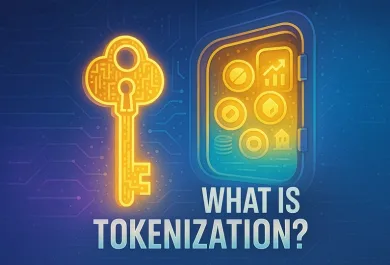If you are familiar with crypto, you might have seen the phrase “ to the moon” somewhere on social media platforms. It could be BTC to the moon, XRP to the moon, ETH to the moon, or whatever token/coin to the moon. However, if you are new to crypto, this term usually means that the token or the coin will appreciate so much that it might reach the moon. So in this article, we will try to understand how analysts, traders, and price predictors forecast price movements. But before we get to the techniques traders and analysts use, let’s check out some parameters that fluctuate the crypto prices.
Main factors that influence the price
Supply and Demand
Supply and demand is a basic economic principle that explains the relationship between these two factors. Supply is how much of something is available, while demand shows how much of the available product people want.
For instance, let’s say you want to produce some material; however, you do not know at what price you want to sell them and how many you want to produce. If you price it too low, you might be losing on profit; however, with a higher price, you won’t be able to sell. Therefore, this law gives you a rough idea of how much customers will buy at what price.
It is no different when it comes to crypto. Bitcoin has a limited supply of 21 million coins, and when the circulating supply is held in wallets, the supply drops. With a low supply and high demand, the price of BTC will appreciate. However, not every cryptocurrency has a top limit to the supply, there are tokens with unlimited supply.
News media and hype
News and media play a huge role in the price of crypto. In the world of crypto when there is news related to token–burning, upgrades, changes in regulations, announcement of tariffs, or paid celebrity endorsement, the price of the token is bound to fluctuate wildly. For instance, XRP had a long ongoing suit with the Securities and Exchange Commission (SEC), and eventually XRP won the legal battle partially, and when this news spread, the price of XRP appreciated.
Regulations and government policy
When Gary Gensler was the chairman of the SEC, there were stringent rules and regulations that crypto projects had to follow. The ex-Chair sued XRP, Coinbase, and Binance exchange on varying allegations. He argued that the cryptocurrencies were securities and therefore had to be regulated. However, the Chair didn’t provide a solid regulatory framework for the industry to follow. As such, many projects left the U.S., some did not launch their tokens. According to critics, Gensler’s reign killed crypto innovation and growth. Venture capital pulled back on U.S.-based crypto startups, and U.S. exchanges lost ground to offshore ones. Overall, crypto prices were quite stagnant during his chairmanship.
Adoption and use cases
The adoption and use case of a project reveal the potential demand and long-term value. Whether it’s needed for paying fees, staking, governance, or accessing a service, the use cases reflect on the durability and longevity of a project. The more critical and frequent the use, the higher the expected demand. If more projects are using the ecosystem to build their own projects, then the demand for that blockchain will increase. Solana started very small, and it was only known by its developers; however, the Solana blockchain became popular with its proof-of-history consensus mechanism. With its transaction speed and scalability, many developers started building their projects on the ecosystem.
Types of analysis
Since we now know the factors that have an impact on the crypto prices, let’s dive into how these factors are considered when analysing the crypto market. When it comes to analysis, there are two types of analysis that could be done. One is the fundamental analysis and the other is technical analysis. The fundamental analysis comprises of checking for events that happens in the market, like geopolitics, tariffs, inflations, etc. Technical analysis is based purely on the trading charts.
Fundamental analysis
Fundamental analysts believe that every asset has a fair value. However, sometimes it could be undervalued or overvalued, if traders have not taken into account factors that could affect the prices. The analysts in this niche are of the frame of mind that the price will tend to naturally correct over time, gravitating towards its real, fair value. When analysts do fundamental research, they check out use case and real-world utility, founders and developers, tokenomics, transaction activity and wallet activity, community engagement with the project, and the regulatory landscape. The fundamental analysis is done based on on-chain metrics, project metrics, and financial metrics.
So how do they do fundamental analysis?
Project metrics
Any analyst doing fundamental research will first read the whitepaper, get to know the project. They usually check the roadmap, the vision of the project, how it solves real world problems. Furthermore, they do a background research on the developers and founding team, to analyze their skillset. They’ll look for past experience of the developing team to see if they have been successful in building a different project.
On-chain metrics
To get a more broader insight about the project, analysts check the on-chain activity. The number of transactions that took place within a specified time and the value of the transactions. To confirm there is no whale activity, they usually check the number of transactions as a whale could transact a big volume of tokens in just one transaction. Active wallet address is another parameter that plays a major role that helps find unique wallet address.
Gas fee is the transaction fee that is paid by the users to the miners. This gas fee fluctuates up and down based on the demand for block space. This is another major parameter that analysts look into. When the gas fee is high, it just shows that the demand on the network is high, and that the chain is reliable.
Hashrate and the amount staked is another key metric to be considered. Hashrate measure the total computational power of a blockchain needed to validate transaction. Higher the hash rate, the harder it is for an attacker to hack. The amount staked shows the health of blockchain— more staking means, there are more validators.
Financial metrics
Market capitalization symbolizes the price and the strength of the token. In mathematical terms, market cap is found by multiplying the price of a token by the circulating supplying. However, this can be misleading. Lets say that just one of those tokens traded for $1, then the market cap of a project that has 10 million token would be $10 million. This valuation is obviously incorrect since the wider market would not be interested in the token, if it does not have strong value proposition.
However, market capitalization could be used to figure out the growth potential of networks. Some crypto investors view “small-cap” coins to be more likely to grow compared to “large-cap” ones. Others believe large-caps to have stronger network effects, and, therefore, stand a better chance than unestablished small-caps.
Liquidity is something thats all analyst look for. In simple terms liquidity goes out to say how easy or hard it is to sell or buy the cryptocurrency. At the end of the day nobody wants to invest in something that they cant get rid of, isnt it?
Technical analysis
Unlike fundamental analysis, technical analysis is all about charts and patterns. Technical analysts think “Everything you need to know — news, fundamentals, emotions — is already in the price.”
It means that no matter what happens in the market, it will be absorbed and reflected in the price charts. Hence, some believe that technical analysis is better than fundamental analysis.
how do they do technical analysis?
Let’s take an example from a famous analyst, Peter Brandt. In his tweet, he mentioned that XRP was forming the head and shoulders pattern, and therefore, he expects the price to fluctuate within a given range. So, how did he do this?
Usually, experts have a trained eye to find trends and pattern on a trading chart. This pattern, for instance, the head and shoulders pattern mentioned in the tweet, once completed, has a way of breaking out.
(Source: tradingview)
When Brandt made this prediction, the head was formed and the pattern was moving towards making the right shoulder. Usually, when the head and shoulders pattern is formed, the right and left shoulder are bound to be equal or be somewhere close. So this why Brandt made a bold prediction that the price could be found anywhere between the $1.9 and $2.9 price range. Technical indicators like the Bollinger bands, RSI and MACD also gives a deeper look into what is actually happening in the market.
However, cryptocurrencies do not always play by the book. Any major events happening in the market could have ruined Brandt speculation. Hence, it would be wise for traders or anyone to do both the fundamental and technical anaysis.












